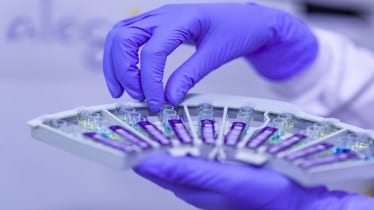By Dr. Gautam Wankhede
Human Papillomavirus (HPV) is a group of related DNA viruses that can infect the genital area, as well as the mouth and throat. HPV virus can have serious health implications, particularly for women, as some strains of HPV are considered high-risk and are associated with the development of cervical cancer.
Cervical cancer, the second-most common cancer among women in India is a major global health concern, especially in low- and middle-income countries where access to preventive measures and healthcare resources may be limited.
India accounts for the highest number of cervical cancer cases as every year approximately 1.25 lakhs women are diagnosed with cervical cancer, and over 75,000 die from the disease.
As per World Health Organisation (WHO), almost all sexually active people are infected by HPV at some point, but usually without symptoms. In some cases, the high-risk strains of the virus persist in the body, get integrated with the cells and progress to cervical cancer.
HPV screening plays a crucial role in the early detection and prevention of cervical cancer. The screening of HPV stands as a cornerstone in the realm of women’s health, offering a pathway to prevention, early intervention, and informed decision-making.
Detecting High-Risk Strains:
HPV encompasses a multitude of strains, some of which are classified as high-risk due to their association with cervical and other cancers. There are more than 200 types of HPV, of which about 14 types (HPV 16, 18, 31, 33, 35, 39, 45, 51, 52, 56, 58, 59, 66, and 68) are considered high risk for causing cancer. Two of these, HPV 16 and HPV 18, are responsible for 83% HPV-related cancers. It is reported that 4 out of 5 cervical cancers reported in India were caused by infections from HPV types 16 and 18.
The individuals who have family history of cancer or have multiple sexual partners and sexual debut at an early age are pre-disposed to developing cervical cancer.
Diagnosis allows healthcare professionals to identify the specific HPV strains, enabling risk assessment and tailored interventions.
Varied Screening Methods for Human Papillomavirus (HPV)
Traditionally Pap-Smear has remained the cornerstone of cervical cancer screening programs in India up till now. To eliminate cervical cancer, screening of women with a highly sensitive test is imperative.
HPV DNA Test:
The HPV DNA test involves analyzing cervical cells for the presence of the virus’s genetic material. This test is particularly effective in identifying high-risk HPV strains known to be associated with cervical cancer. It is often used as a co-testing method alongside the Pap smear for comprehensive screening.
HPV RNA Test:
A relatively newer addition to HPV screening, the RNA test detects the presence of viral RNA, offering a more dynamic view of active infections. This method can help identify persistent infections and assess the risk of developing cervical abnormalities or cancer.
Visual Inspection with Acetic Acid (VIA) and Lugol’s Iodine (VILI):
VIA and VILI involve applying acetic acid or Lugol’s iodine to the cervix and visually inspecting the changes in cervical tissue. These methods are particularly useful in resource-limited settings where more sophisticated tests may be challenging to implement. They serve as valuable tools for identifying potential lesions or abnormalities.
Self-Sampling Kits:
To enhance accessibility and encourage participation, self-sampling kits have been developed. These kits allow individuals to collect their own cervical samples at home, which are then sent to a laboratory for analysis. Self-sampling can be particularly beneficial in reaching populations with limited access to healthcare.
Urine based HPV screening
Urine-based HPV testing is an area of active investigation, and several studies have explored its feasibility and accuracy. The advantage of urine-based testing is that it is non-invasive, making it potentially more acceptable to individuals and easier to collect than cervical samples.
Emerging Technologies:
Ongoing research continues to explore emerging technologies, such as biomarker identification, to enhance the precision and sensitivity of HPV screening. These technologies aim to improve early detection and risk assessment.
Prevention through Vaccination
There are HPV vaccines available that can protect women against cervical cancer. The vaccine is known to be most effective when given to girls before they become sexually active, hence, it is recommended that 9–14 years as the ideal time for vaccination.
It is important to note that while vaccines can greatly reduce the risk of HPV, they cannot neutralize the virus in people already infected. Also, vaccination doesn’t replace screening – Even if you get the HPV vaccine, you need to get screened for cervical cancer.
In conclusion, the importance of HPV diagnosis in women’s health cannot be overstated. It serves as a cornerstone for prevention, early intervention, and overall well-being. By embracing the significance of HPV diagnosis, coupled with vaccination efforts, contribute to a future where the impact of HPV-related diseases is significantly reduced, marking a substantial stride toward women’s health and well-being.
(The author is a Director of Medical Affairs, Mylab Discovery Solutions. Views expressed are personal and do not reflect the official position or policy of the FinancialExpress.com.)
